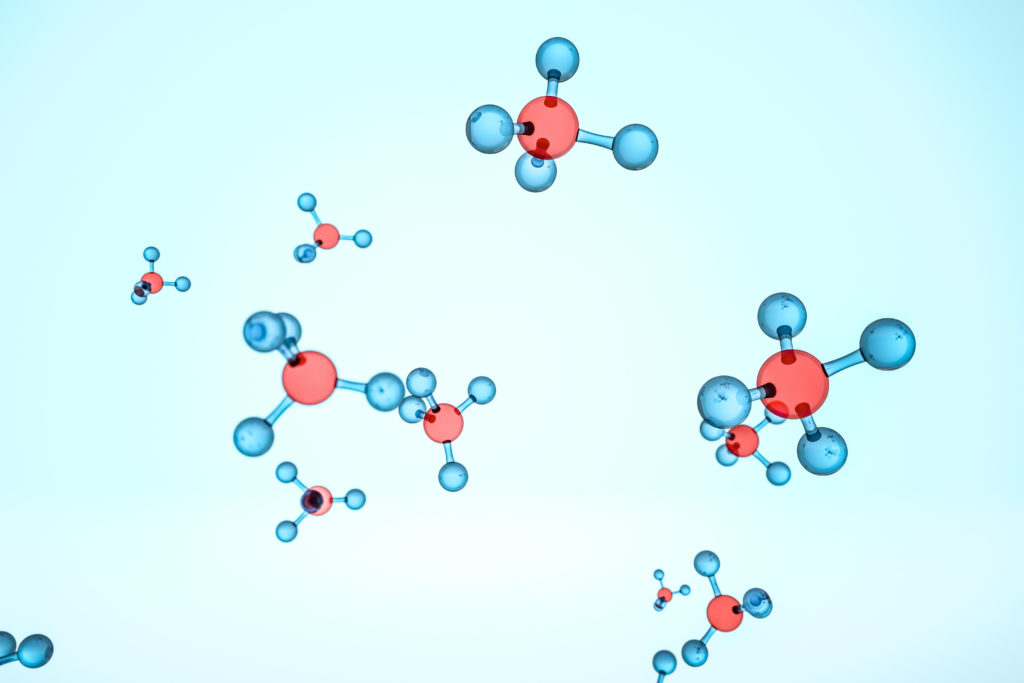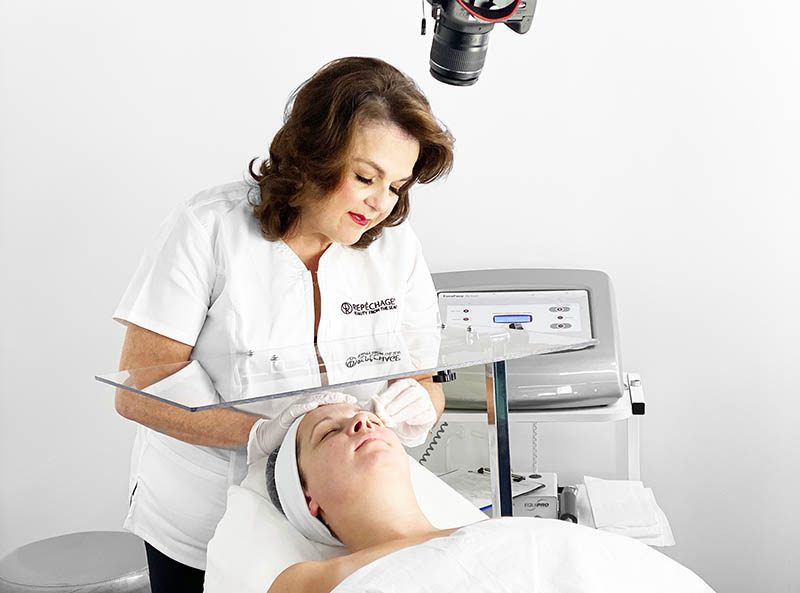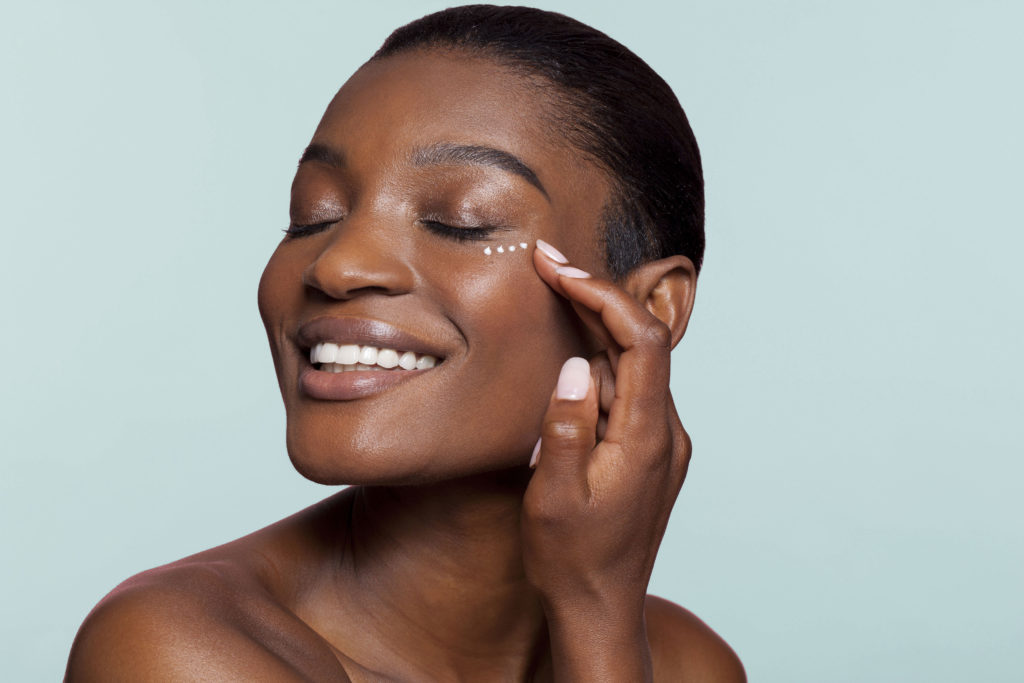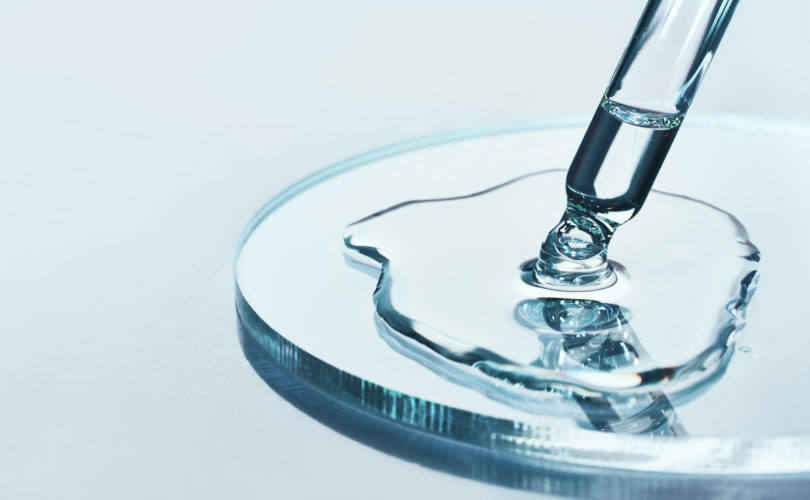Retinols and “retinol sandwiches” have been in the news for the past few years, touting ways to control and minimize adverse reactions to retinol while reaping the anti-aging benefits of the ingredient. Peptides, as we have written about before, can offer the esthetician a wide range of anti-aging benefits without the detrimental effects, however.
A comparison of retinoids and peptides reveal an extensive diversity in anti-aging effects on the skin. They are both different and complementary in their mechanisms of action. Here, we’ll review the function and benefits of each of these ingredients, and present their different advantages and drawbacks are presented.

What are Peptides?
Peptides are small molecules consisting of at least two amino acids linked together. Depending on the amount and type of amino acids connected, peptides form specific structures. One of the important functions they play is as messenger molecules. As signal molecules, they will influence skin maintenance and therefore the way your skin ages, such as stimulating an increased production of collagen and elastin.
Peptides have different mechanism of action on how to improve the condition of your skin when applied topically. Palmitoyl pentapeptides, such as Matrixyl will help skin appear firmer, for example.
Enzyme-inhibitor peptides are another class of peptides. These are the soy oligopeptides and rice peptides. Certain enzymes lead to the degradation of collagen fibers in the skin. As we age, we inhibit these enzymes less over time. This category of peptides work as signals that tell the cells to produce less of the collagen- degrading enzymes. Applied topically, these can help reduce the appearance of wrinkles.
A third type has a similar effect as Botox, the neurotransmitter inhibitor peptides, such as Argireline. They function by inducing the facial muscles to relax more, and reduce expression lines that way. Applied topically, certain studies have shown a 30% reduction in the appearance of wrinkles by this mechanism.
There are also peptides that function as carrier peptides. One popular version of these are the copper peptides, such as GHK-Cu. Anti-aging data on this peptide is well-documented. The role of copper is that it forms an important part of certain functional groups in the skin, such as collage-building enzymes and antioxidants native to the skin.

For more on how to incorporate peptides into professional treatments, see LydiaSarfati.com for courses on treatments for anti-aging, brightening and reducing the signs of aging around the eyes.
Peptides have several positive advantages compared to ingredients such as retinol. According to some findings, peptides take a relatively shorter time to have an effect when compared to retinols. Further, peptides are much less drying and irritating than retinoids, thus being ideal for those with dry or sensitive skin. And they can also be applied both day and night. In addition, the variety of ways that peptides benefit skin health means you can choose which types of peptides that benefit your specific needs. For example, the enzyme-inhibitor peptides will be a nice option for those that want to prevent the appearance of wrinkles.
A potential drawback has to do with the permeability in the skin. Some peptides can have difficulty permeating the skin barrier, leading to a lower absorption of peptides where they would have an effect. In addition, some enzymes already present in the skin could have a protein-degrading effect on peptides, further reducing the efficacy. In order to overcome delivery problems, the skincare formula itself could have ingredients that increase the penetration of the ingredients. Or the peptides could be altered to be more oil-soluble, also improving absorption. An interesting source of penetration enhancers are derived from alginate, which is abundant in seaweed. Testing of penetration enhancers (in 2020 and 2021) concluded that delivery of actives was increased in microemulsion alginate hydrogels compared to a comparison standard. This is very promising for seaweed-based cosmetics.

What are Retinoids?
Retinol and retinoids are oil-soluble molecules belonging to the family of A-vitamin. This vitamin has an effect on biological development by regulating cell division and growth. This plays an important role in infancy when we develop organs, the nervous system and our limbs.
When applied topically the skin cells undergo an increased turnover. According to a review article in “Advances in Dermatology and Allergology” in 2019, retinoids are still “among the most documented substances slowing the aging process”. So it is still an impressive anti-aging ingredient, and has a long history of documented effect.
Retinol and other A-vitamins must first be changed by enzymes in several steps, first to retinaldehyde, and then to retinoic acid. It is in this form that retinoids become biologically active. Cells have specific receptors for retinoic acid, and binding of retinoic acid to these lead to a process of increased cell turnover and increased elastin and collagen production. The end results are the diminished appearance of wrinkles.
Retinol both reaches cells easily and has a long-documented efficacy. Then why isn’t this the only answer to anti-aging? The answer is: side-effects. First, the classic retinol and retinoic acid has an equally long track record of irritation, redness, peeling and dryness if overused. Therefore, it is recommended to use small amounts and few evenings per week, and then build up as your skin gets used to it. Secondly, retinol should ideally be used at night as it is unstable to air and sunlight. In addition, the increased turnover of skin cells leaves your skin more sensitive to sunlight while using retinol. Therefore, the use of a high protection sunscreen is recommended during the daytime. Finally, it is not recommended to use retinol and retinoids while breastfeeding or pregnant.
Of course, steps have been taken to stabilize and modify retinol to make it easier to use. Next-generation retinoids such as Granactive Retinoid, and the plant-based Bakuchiol, have studies that suggest they are less irritating while still imparting the retinoid anti-aging effects.
There are exciting developments for both of these types of skincare actives, with a focus on reducing their drawbacks. But even with drawbacks, they can be combined in a way that optimizes their function. Retinols can be used at night, and peptides can be used in the daytime. Or use them on alternate days. And since peptides are not drying, these could be used more frequently for those with dry or sensitive skin, and the other way around for oily skin types. There is something for everyone with both peptides and retinoids.
